Safeguard your brand in the UK
Trade Mark Most Asked Questions
Straightforward, fairly priced trade mark registration
Packages & Cost
Our packages for those who wish to protect their brands in the UK.
The Process
To register a trade mark across the entire European Union, the most efficient method is to file a European Union Trade mark (EUTM) application. This application covers all 27 EU Member States. The registration process typically takes about 4-5 months, so long as there are no objections.
The EUTM provides protection in every EU member state. A single similar trademark in any member state can lead to the rejection or cancellation of your application.
If accepted your ™ is registered for 10 years

Registering Trade Marks in Different Countries
The process of trade mark registration varies significantly from country to country, with each jurisdiction having its own legal framework, requirements, and procedures. Understanding these differences is essential for businesses to ensure comprehensive protection, avoid potential legal disputes, and maintain their brand’s integrity across international markets.
Whether navigating the complexities of the Madrid Protocol for international registration or dealing with individual national systems, a well-informed approach is key to securing and enforcing trade mark rights worldwide.
We’ve answered the most commonly asked questions relating to registering trade marks in different countries
No, a trade mark is only valid in the jurisdiction where the IP Office has approved the application.
There are a few jurisdictions which are covered in one trade mark application, such as Benelux (BX) covering Belgium, Luxembourg, and the Netherlands, the European Union (EU) which covers its member states, or the African Intellectual Property Organization (OA) covering its member states.
You can file in multiple countries through WIPO, but remember you are still applying for multiple independent trade marks in each of the selected countries.
So, when registering a trade mark, you need to choose which countries you want your brand to be protected in. It is usually recommended to register in the jurisdictions where your brand is active or where you plan to expand shortly. Being ‘active’ refers to offering your brand’s products or services to the public for sale or manufacturing them.
Yes, it is possible to own a trade mark in multiple countries, and many companies do. However, this is typically achieved by owning separate trade marks in each country, since trade marks generally don’t apply across borders (the only exceptions are multi-country jurisdictions, such as the EU or Benelux).
Different rules apply in different countries, and where one country’s IP office might accept your application, others might refuse it or require changes that affect the level of protection. Generally, you won’t be able to apply outside of your country of residence without the help of a legal representative (with some exceptions).
Additionally, when applying for a trade mark in multiple countries, the cost of registration will add up.
Yes, it is possible. If you register a trade mark in one country and later want to register the same trade mark in another country, you can do so by filing another application in the second jurisdiction.
However, when extending the trade mark to other countries, it is important to note that the trade mark may not be accepted in the territory of the other country. Just because you have successfully registered a trade mark in the first country does not mean you will automatically register it successfully somewhere else.
Similarly, if you were to register a trade mark in two countries at the same time, it may happen that the trade mark will be registered in one country and refused in another.
There is essentially no process for “extending a trade mark”; you will simply have to file a new application. Since the applications are filed separately in their respective jurisdictions, the results may vary. It is important to undertake searches in all countries you wish for protection and to register your trade mark before applying to do so.
If your first trade mark was registered in a WIPO member state, you can use the Madrid System to file your second application in another member state. This can come in handy if you want to expand to more countries at once, but remember these are still separate applications.
If you file two identical trade mark applications within six months of each other in different countries, it will grant you something called “priority filing.” With priority filing, the subsequent trade mark application filed in a different country can use the earlier filing date from the prior trade mark application. For example, if you file your EU trade mark application on the 4th April and afterward your US trade mark application on the 4th August, the US trade mark application can use the priority filing to gain the filing date of your EU trade mark application, which will be the 4th April instead of the 4th August. This means the subsequent application can use the filing date of the first application, providing earlier protection in the new country.
For international registration, you have two main options:
- Registering your trade mark via the World Intellectual Property Organisation (WIPO)
- Applying in each country individually
Using WIPO, you can apply in any of its 193 member states, but your application must be based on an existing application or registration from a member state (a “basic trade mark”). You don’t need to wait for the basic trade mark to be fully registered; a pending application is sufficient. The international application must be filed through the office of origin. Filing through WIPO can be advantageous since it avoids the need for translations or hiring representatives in each country.
Alternatively, you can apply separately in each country, often requiring local legal representation.
You can apply for trade marks in multiple countries at once or in stages.
If you want to register in multiple countries simultaneously for broader protection, you can:
- Use an agent to file applications in each country. Multiple legal representatives may be necessary, depending on their coverage.
- Use the Madrid System through WIPO, requiring a base application in a country where your company is incorporated or where you are a citizen. This simplifies the process by using one agent and one language.
The decision on how many countries to register in initially depends on your budget. Filing in multiple countries can be expensive. If your finances allow, you can file in as many countries as needed for early protection. Otherwise, start with key markets and expand later.
No, successful registration in one country doesn’t affect applications in other countries. Each application is assessed independently by the respective IP offices.
For example, if you successfully register in the UK but face opposition in the EU, the EU application might be refused while the UK registration remains valid.
No, a refusal in one country doesn’t affect applications in others, even when using the Madrid System. Each IP office assesses the application independently.
For instance, if you apply in India, Japan, the US and Canada, and Canada refuses your application, the other applications proceed unaffected.
However, if your base application for a WIPO filing fails, all related WIPO applications fail.
There’s no such thing as a global trade mark. Trade mark protection only applies in the registered countries or multi-country jurisdictions (e.g., the EU). Registering a trade mark in every country is costly and complex, involving over 190 separate registrations.
WIPO streamlines the application process but doesn’t provide a global trade mark.
A strategic approach involves registering in key markets where you are currently active or plan to expand. You can add more countries later as your business grows.
Consider using a global registration provider offering multi-country packages for simultaneous registration in multiple countries, avoiding the need for separate legal representation in each jurisdiction.
Trade mark protection only applies in the registered countries. To protect your brand globally:
- Register in countries where you distribute or market your products.
- Expand registration to countries with significant growth potential.
- Consider your budget, as registering in multiple countries can be expensive. Start with key markets and expand later.
No, it’s not mandatory to register in your home country first.
You can register your trade mark in any country, regardless of your residence. However, you typically need legal representation to file the application. An attorney or legal service can represent you in the trade mark proceedings.
Your domicile or business address will be included in the application and publicly available via the trade mark registry.
No, it’s not mandatory to register in your home country first.
You can register your trade mark in any country, regardless of your residence. However, you typically need legal representation to file the application. An attorney or legal service can represent you in the trade mark proceedings.
Your domicile or business address will be included in the application and publicly available via the trade mark registry.
Yes, registering a trade mark in a new country where your business expands is advisable. Trade mark protection only applies in registered jurisdictions, so expanding your registration as your business grows is crucial.
File a new application with the national IP office. However, assess the risk before registering to avoid conflicts with existing trade marks in the new market. The search service that we offer will ensure that you know the likelihood of conflict and risk ahead of filing any application.
Yes, you can register a trade mark in countries where your business is not yet active to prevent copycat attempts.
Most jurisdictions don’t require proof of sales, except the US. In the US, you can file an ‘intent-to-use’ application if you’re not yet active, giving you priority over later applications. You’ll need to prove commercial activity within approximately one year, with possible extensions up to three years.
This allows you to secure your trade mark before launching in a new market
You should consider registering your brand’s name or logo in countries where you are currently operating or planning to operate in the future. Countries with a large customer base present a higher risk of brand imitation.
Starting with key countries and expanding as your business grows is a prudent strategy. Each jurisdiction requires a separate application, and a failure in one jurisdiction does not affect others, as each application is independently assessed.
It’s vital to file your trade mark application as soon as possible to establish priority over potential identical or confusingly similar marks.
For a global SaaS business, prioritising major markets such as the UK, EU, US, Canada, China, Australia, New Zealand, Japan, and Brazil is recommended.
You can extend protection to additional countries later. Once you secure trade marks in the key markets, focus on other regions where you have a significant customer base.
Each IP office evaluates trade mark applications independently. Some countries may be stricter than others.
If a word mark is deemed too descriptive in one country, it’s likely but not guaranteed to face similar issues elsewhere. In some cases, you may provide evidence of acquired distinctiveness, like “Apple” for computers. Alternatively, registering the mark as a logo or figurative mark can provide limited protection, covering the text only when used with the logo.
The Madrid Protocol, governed by the International Bureau of WIPO, simplifies obtaining trade mark registrations in multiple countries via a single application based on an existing national application.
Yes, you need a pending or registered trade mark in a member country to use the Madrid System. This base application must be filed through the IP Office in the chosen country.
Yes, nationals or businesses in a Madrid System member state can use it to register trade marks in other member countries. An international application must be based on a national application filed in a member country.
Potential drawbacks include:
- Limited to WIPO member countries.
- The basic mark’s failure within five years can cancel all related international registrations.
- Lengthy process (up to 18 months).
- Ownership changes require the assignee to be eligible for international filing.
- Potentially higher costs compared to national filings, depending on the number of countries.
Each country evaluates trade mark applications based on its own laws. A refusal in one country does not impact the status in others. For refusals, engaging a local trade mark specialist is advisable for further proceedings.
Yes, it’s advisable to register a trade mark in China even if you only export products from there. Chinese courts have ruled that exported goods can infringe IP rights under certain conditions, such as online accessibility and potential confusion in logistics.
Yes, you can sell your products in the UK, but your US trade mark won’t protect your brand there. To protect your brand in the UK, you should register a UK trade mark. International filing through WIPO can be considered for broader protection.
Choose countries based on website visitor demographics, social media presence, company base, and significant markets. Starting with a few key countries and expanding later is a practical approach. There is no global trade mark, so prioritise based on budget, research, and legal advice.
If you wish to extend your trade mark protection into a single new country, the best way would be to simply file a new application with the local IP office. Please note that in the case of the United States, if you aren’t a resident, you’ll need a US-licensed attorney to represent you.
Please also keep in mind that a successful registration in the UK doesn’t mean your application will automatically be successful in the US. Firstly, it will be examined by a different government agency—the USPTO, which follows a different set of rules and practices than the UKIPO in the UK. Secondly, part of the registration process involves allowing the owners of previously registered trade marks to come forward and oppose the new application, and in the US, you might be opposed by brands you haven’t encountered in the UK.
Therefore, assessing the risk level before filing your application in a new country is crucial. Our trade mark search service assists with this by highlighting any potentially infringing marks along with any potential issues with the mark itself, such as distinctiveness.
If you don’t need to extend your trade mark to many countries, you can file individual trade marks via local agents or trade mark specialists. This might be a good option if you plan to register your trade mark in fewer than five countries. One application will be filed in each of the countries of your choice. If your second application is filed within six months after the first one, you might benefit from an earlier filing date through a priority claim.
Alternatively, you can file via the Madrid System using the World Intellectual Property Organisation (WIPO). This way, you only need one base application – in your case, in the US. The US trade mark does not have to be fully registered at this stage – pending applications are accepted by WIPO as well. The base application should cover the same goods and services that will be registered internationally. You only need one representative who will manage your international application. There is no need to appoint a representative for each of the countries where you wish to register. You will then choose the countries where the international application will be filed. You can select from 193 WIPO member states.
Please also keep in mind that a successful registration in the UK doesn’t mean your application will automatically be successful in the US. Firstly, it will be examined by a different government agency – the USPTO, which follows a different set of rules and practices than the UKIPO in the UK. Secondly, part of the registration process involves allowing the owners of previously registered trade marks to come forward and oppose the new application, and in the US, you might be opposed by brands you haven’t encountered in the UK.
Therefore, assessing the risk level before filing your application in a new country is crucial. Our trade mark search service assists with this by highlighting any potentially infringing marks along with any potential issues with the mark itself, such as distinctiveness.
Unfortunately, yes. Trade marks are territorial, and your US trade mark protects you only in the US. If you want to extend your legal protection to other countries, you have to apply for a trade mark there. Usually, we recommend selecting countries based on where your customers are or where you plan to expand to, as well as the country you may manufacture your goods in.
You can consider international trade mark registration mechanisms like the Madrid System, which allows you to register in multiple countries simultaneously. Multi-country jurisdictions, such as the EU, allow you to cover more countries with a single application too.
No, the registration with the UKIPO is only valid in the UK. The protection granted by your trade mark applies only in those countries where you hold a registration.
To gain protection in the Belgium, you need to apply for a trade mark with the Benelux IP office (BOIP), which covers Belgium, Luxembourg, and the Netherlands. It is sufficient to file one application to gain protection in these three countries as they operate under one IP office.
Yes, it is possible to register a trade mark in the US and the EU without being a resident, but you will need a legal representative to file the application on your behalf. You will still become the owner of the trade mark, even if you do not file the application yourself.
You can appoint an agent, such as National Business Register to help you extend your trade mark protection. They will file an individual application in the UK and the EU. Once the process is complete, you will receive two trade mark certificates.
You can also use the Madrid System and file your application via WIPO; however, this option is generally less cost-effective if you need to file in fewer than five countries.
Why Trade Mark?

What our clients have said
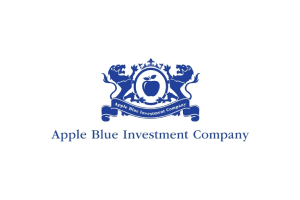


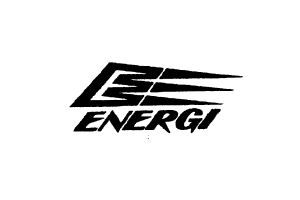
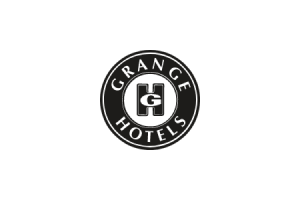
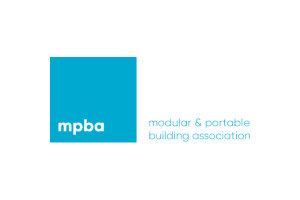

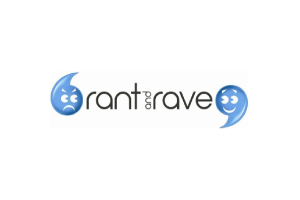
Book your FREE consultation session
Need some advice? Got some burning questions that you want answering?
It only takes two minutes



